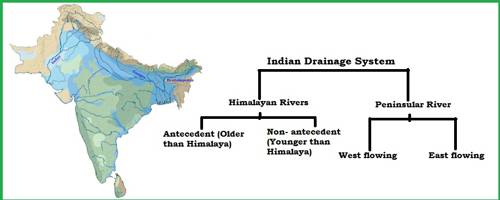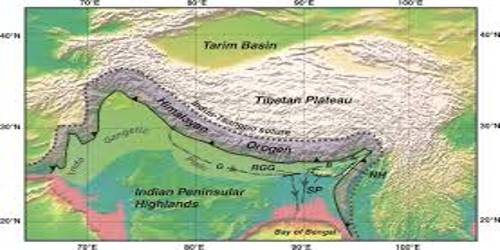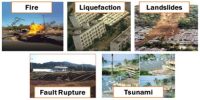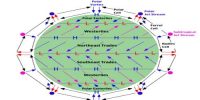Comparison between the Himalayan and the Peninsular River
The Himalayan drainage system has evolved through a long geological history. It mainly includes the Ganga, the Indus, and the Brahmaputra river basins. The Peninsular drainage system is older than the Himalayan one. This is evident from the broad, largely-graded shallow valleys, and the maturity of the rivers.
Himalayan River
- Place of origin: Himalayan Mountain covered with glaciers.
- Nature of flow: Perennial; receive water from glacier and rainfall.
- Type of drainage: Antecedent and consequent leading to the dendritic pattern in plains.
- Nature of river: Long course, flowing through the rugged mountains experiencing headword erosion and river capturing. In plains meandering and shifting of course.
- Catchment area: Very large basins
- Age of the river: Young and youthful, active and deepening in the valleys.

Peninsular River
- Place of origin: Peninsular plateau and central highland.
- Nature of flow: Seasonal; dependent on monsoon rainfall.
- Type of drainage: Superimposed, rejuvenated resulting in trellis, radial and rectangular patterns.
- Nature of river: Smaller, a fixed course with well-adjusted valleys.
- Catchment area: Relatively smaller basin.
- Age of the river: Old rivers with a graded profile, and have almost reached their base levels.
















